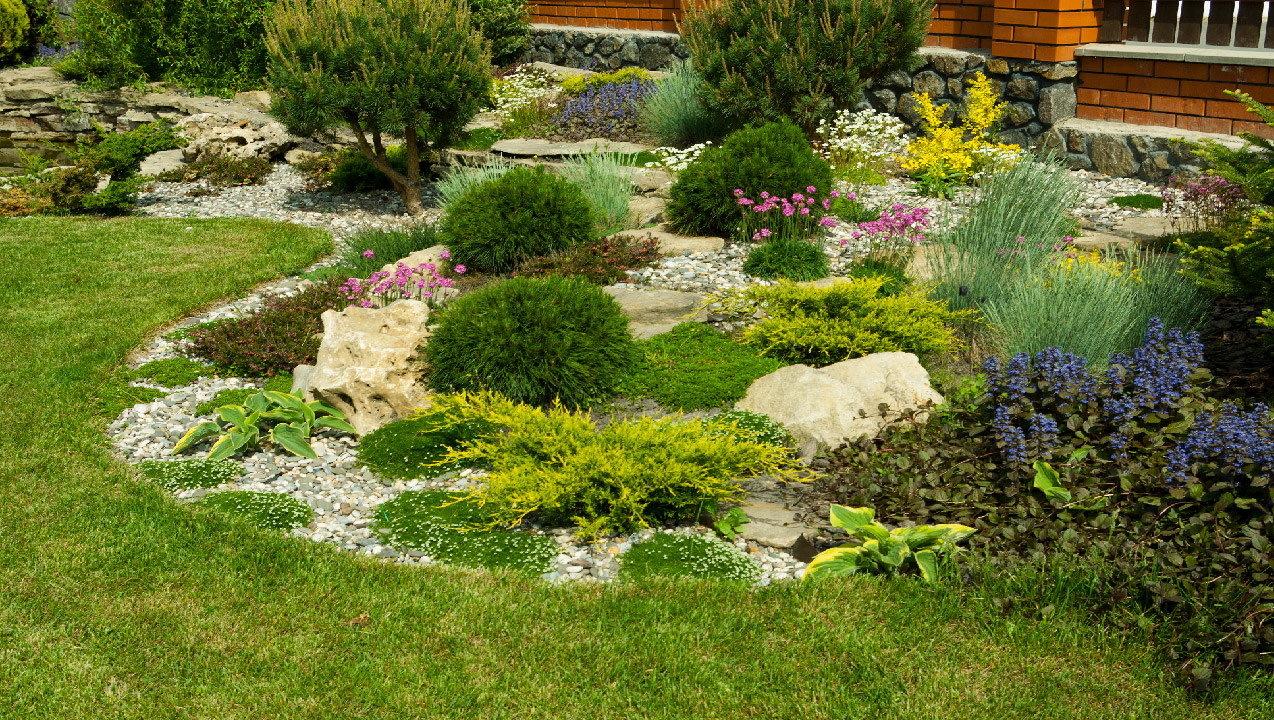Landscape Design Tips
Mar 16th 2023
If you want to devise a beautiful landscape around your home, you can hire a professional landscape designer or endeavor to create one yourself. Using basic design techniques and tried and true methods for inspiration, a high-quality landscape can be designed right at home. Thankfully, there is plenty of resources for capable homeowner to create their landscapes.
Landscape Design Basics
If you are completely new to landscape design, there are many styles to pull inspiration from. Japanese gardens tend to be minimalistic and emphasize stillness and meditation. Modern gardens are defined by clean lines and creating an aesthetic space. English or cottage gardens, on the other hand, are more informal and romantic, with a large variety of flowers and other plants. You may want to consider different styles, including Mediterranean gardens, rock gardens, desert gardens, or even food forests. Excellent landscape design makes use of both hardscape and softscape elements. Hardscape elements include all the inanimate objects in a space, like water features, patios, rocks, or fireplaces. Softscape refers to all of the living elements in a landscape, mainly the plants themselves. Find your ideal ratio to balance the two with each other, drawing inspiration from the styles listed above.
Getting Started Designing Your Landscape
According to permaculture, a landscape management approach emphasizing diverse and resilient ecosystems, the most important first step in designing your land is simply spending time in it before making any crucial decisions. Live with your area and see what details you pick up. From there, you need to get some graph paper and sketch your yard, landscape, or garden. This first sketch can be as rough or detailed as you would like to make it. Are there any buildings, pathways, or central features in your landscape already? Please include all of them in your overview sketch. Are there design components you need to include, like a lawn for children to play? Are there specific things that would be nice but aren't essential, like a bed of wildflowers or a garden bed specifically for annual vegetables?
From here, creativity really starts. Decide on a focal point. Will you have a fireplace? What are the best trees for your area? What are your favorite perennial flowers? Where do you want your annual garden bed? Begin to sketch out all the details on your graph paper. Consider environmental factors such as sun, wind, erosion, water flow, and terrain. Some essential details you may not immediately consider are the irrigation system you want to use, where you want your sprinkler valves to come up, and whether you want to include path lights. While creating your design, you should think big. But when you finally get to the implementation stage, starting small with one area at a time is important. Enjoy the process, and you're much less likely to take shortcuts later.
DIY Irrigation Systems
The watering system is one of the essential parts to consider when designing your landscape. Many people prefer to keep their irrigation systems as hidden as possible to create a beautiful landscape. By arranging your system, you have complete control over all parts and where they can blend into your landscaping. DripWorks offers ⅛ tubing for easy integration into a beautifully manicured area. For an all-in-one package that needs to be installed, we also provide a Raised Garden Bed Kit to create a tasteful and discreet irrigation system in the garden. For a large area, getting a hose splitter that attaches directly to the hose bib may be worth it to implement your irrigation system on one side and a garden hose on the other.
A quick calculation may be needed to understand how much water your plants need daily. This can influence your watering system, so it's important to do it before investing. Plant watering needs are usually measured by how many inches of rainfall they receive in each time period. However, supplementing the rain with an irrigation system requires using gallons as a form of measurement. This helpful calculator from the University of California Division of Agriculture and Natural Resources can assist you in converting cubic inches to gallons and determining the water requirements of the plants you want to use in your design.
Other Landscape Considerations
Budgets for implementing a landscape design can vary wildly depending on whether you are starting from scratch or just want to spruce up one area. Plants from a garden center can be costly but consider investing in healthy, high-quality ones that will last if taken care of. It is important to note that many nurseries and garden centers still sell plant species that are considered invasive. Look at the invasives in your area and avoid adding them to the landscape because they can quickly spread, taking habitat away from native species.

